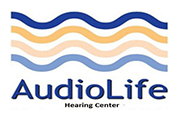
The numbers don’t lie: you may require hearing aids eventually. A quarter of individuals from 60 to 75, according to an NIDCD report, have hearing loss and for individuals over 75 this figure increases to 50%. But how can you be sure which model is correct for you when you realize it’s your best opportunity to combat hearing loss? Developments in technology over the years have fixed some of the issues traditionally connected to hearing aids, like an excessive amount of background noise and vulnerability to water damage. But to ensure that your choice of hearing aid is correct for you, there are still things you need to think about.
Look Closely at Directionality
One essential feature you need to look for in a hearing aid is directionality, which has the ability to keep background noise to a minimum while focusing on sound you want to hear such as conversations. One, if not both, of two types of directionality systems are operating inside most hearing aids, they either focus in on sound directly in front of you, or they focus on sound coming from different speakers and sometimes do both.
Will Your Hearing Aid Interact With Your Phone?
As a country, we’re addicted to our cell phones. You more than likely have some type of cell phone, either a smartphone or an older style cell phone. And on the unlikely event that you don’t own any kind of cell phone, you probably still have a land-line. So, when you’re testing different hearing aids, you will want to see how they connect to your phone. How does it sound? Do voices sound sharp? Does it feel comfortable? Is it Bluetooth Ready? These are all of the things you should take into account when looking at new hearing aids.
What is The Probability You Would Actually Wear it?
As noted above, hearing aid technology has progressed tremendously over the past few years. One of those advances has been the size and shape of hearing aids, which have moved towards the smaller and more comfortable path. But there are definitely pros and cons. A more compact hearing aid might not be as powerful as a bigger one, so it mostly depends on your hearing professional’s suggestion and what you need to achieve with your hearing aid. The little models won’t have the features of the larger models and they may get clogged with earwax but they do fit inside your ears almost invisibly. On the other side of it, better directionality features and more advanced sound amplification options are available with a behind the ear hearing aid though it’s a little larger.
Exposure to Specific Background Sounds
Wind noise has been an extreme issue for hearing aid users ever since they were invented. It would have driven anyone nuts to go outside on a breezy day and hear nothing except wind. If you’re an outdoors person or you live in a windy area, you’ll want to find a hearing aid that suppresses wind noise so you can carry on conversations at an average volume and steer clear of the headaches that are linked to hearing aid wind noises. Inform yourself about the many different hearing aid options available to you. Call us.
